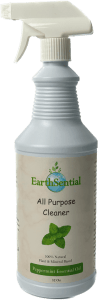The rise and fall of antibacterial soap
The rise and fall of antibacterial soap began with the inception of Dial Soap in the late 1940s in the Chicago market. They introduced a revolutionary approach by incorporating the disinfectant hexachlorophene, known as AT-7, as a key ingredient.
This innovative addition gave birth to the concept of antibacterial soap, providing consumers with a product that not only cleansed but also claimed to prevent odor caused by perspiration.
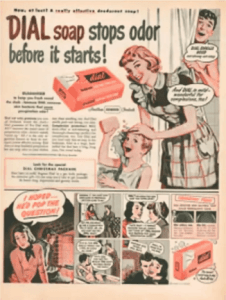
Capitalizing on Hygiene Concerns
Dial’s marketing strategy capitalized on the growing concern over hygiene and germs, positioning their soap as the ultimate germ-fighting solution.
Early advertisements vividly depicted germs and microbes being eliminated by Dial, creating a powerful visual message that resonated with consumers.
The promise of “round-the-clock” protection against perspiration odor further bolstered Dial’s appeal as the go-to antibacterial soap.
Rising Popularity and Alarming Reports
The initial success of Dial was undeniable, and it quickly gained popularity across the nation.
Places like healthcare facilities, hospitals, clinics, schools, restaurants, offices, and other public spaces incorporated these products into their hygiene practices, with the belief that they could provide an added layer of protection against harmful pathogens.
Tragic Repercussions
Within the first 20 years of production, alarming reports started emerging about the toxic effects of hexachlorophene, particularly on infants.
The antibacterial compound was found to be associated with severe side effects, including neurological damage in babies. Tragically, numerous infant deaths were attributed to the use of hexachlorophene-containing Dial soap.
In response to these concerning reports, Dial underwent a series of reformulations, removing hexachlorophene from its product in 1972.
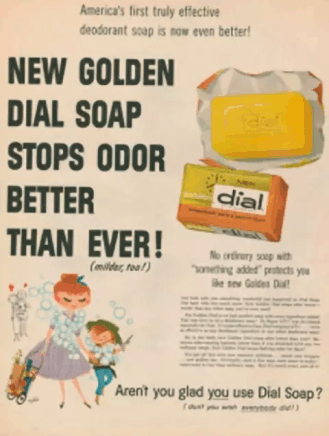
The rise and fall of antibacterial soap
Triclocarban: A Safer Alternative for Dial’s Antibacterial Soap
After the removal of hexachlorophene (T-7) from their soap due to its toxic effects, the company replaced it with triclocarban, a synthetic antibacterial compound.
Triclocarban seemed to offer promise as a safer alternative and provided Dial with continued success in the market.
For around 45 years, triclocarban served as the active ingredient in Dial’s antibacterial soap, and the brand maintained its position as a major player in the industry.
The Growing Doubts About Triclocarban
As time passed, concerns about the safety and effectiveness of triclocarban began to arise.
Studies raised questions about its potential adverse effects, and public awareness grew regarding the lack of solid evidence supporting the significant benefits of antibacterial soaps over regular soap and water.
In response to these concerns, the U.S. Food and Drug Administration (FDA) took a closer look at the active ingredients used in antibacterial soaps.
In September 2016, the FDA issued a ruling that triclocarban, along with another common antibacterial compound called triclosan, can no longer be marketed in over-the-counter antibacterial hand soaps.
The FDA’s decision came after careful evaluation of safety and efficacy data, which revealed that triclocarban and triclosan were not significantly more effective than plain soap and water in preventing the spread of germs.
The ban on triclocarban and triclosan in antibacterial soaps represented a significant turning point in the industry, leading to a shift away from these compounds.
Dial and other soap manufacturers had to reformulate their products, replacing the banned ingredients with safer alternatives.
The Quest for Safer Alternatives: Benzalkonium Chloride
In light of the FDA’s ban, soap manufacturers, including Dial, sought safer alternatives to triclocarban.
One such alternative is benzalkonium chloride, a common ingredient found in many household disinfectants and cleaning supplies.
However, it is important to note that benzalkonium chloride comes with its own set of concerns.
It is considered a sensitizer, meaning it has the potential to cause allergic reactions, especially for individuals with asthma or skin conditions like eczema.

The rise and fall of antibacterial soap
Recommended Handwashing Practices
Proper handwashing is one of the most effective and simple ways to prevent the spread of germs and illnesses.
Health experts recommend using plain soap and water for hand hygiene, as it has been proven to be highly effective in removing dirt, bacteria, and viruses from the skin.
This thorough and consistent handwashing routine helps to eliminate harmful pathogens and reduce the risk of infections.
Tips for Effective Hand Hygiene
Wash Hands Frequently:
Encourage individuals to wash their hands frequently, especially after using the restroom, before eating, and after coughing, sneezing, or touching surfaces in public places.
Proper Technique:
Proper handwashing involves wetting hands with clean running water, applying soap, lathering all parts of the hands (including the back, between fingers, and under nails), scrubbing for at least 20 seconds, and then rinsing thoroughly under running water.
Use Hand Sanitizer When Soap and Water Are Unavailable: In situations where soap and water are not readily available, using alcohol-based hand sanitizers with at least 60% alcohol content can be a suitable alternative. However, hand sanitizers are not a replacement for proper handwashing and should only be used when necessary.
Avoid Touching Face:
Avoid touching your face, especially their eyes, nose, and mouth, as this can introduce germs from their hands into their body.
Practice Respiratory Hygiene:
Use proper cough and sneeze etiquette, such as covering the mouth and nose with a tissue or the elbow to prevent the spread of respiratory droplets.
Handwashing for All Ages:
Teach children the importance of handwashing from an early age, instilling good hand hygiene habits that they will carry into adulthood.
By following these recommended handwashing practices and maintaining good hand hygiene, individuals can protect themselves and others from illnesses, reduce the transmission of germs, and promote overall public health.

EarthSential
All Purpose Cleaners:
Each designed to bring a touch of natural freshness and cleaning power to your home.
Available in: Clove, Lavender, Lemongrass, Mint & Orange.
All Purpose Cleaner can be used on a variety of surfaces, including kitchen and bathroom counters, floors, furniture, and even pet items.
We prioritize your well-being and the health of our planet.
That’s why our products are carefully crafted to be non-toxic, ensuring a safe and healthy cleaning experience for you and your family.
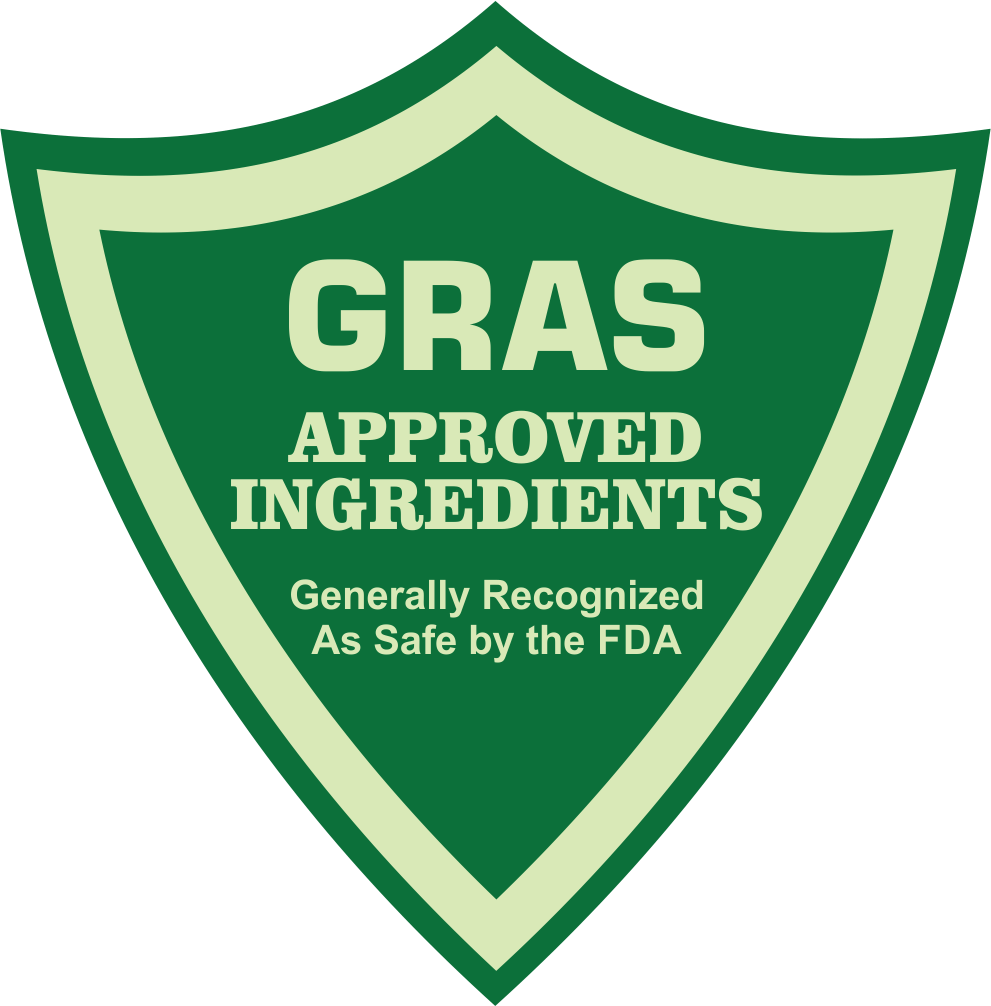
The SAFEST All Natural Ingredients
EarthSential products are made with safety as our first ingredient! Our ingredients are all natural food grade and all found of the GRAS List, approved as SAFE ingredients by the FDA. Rest assured that our products are the SAFEST in the world, we made them that way.
Related Articles:
![]()
Combatting

Dry Hands
by Bonnie Pellerin Ι July 17, 2023 Ι 5 Min Read
Deceptive
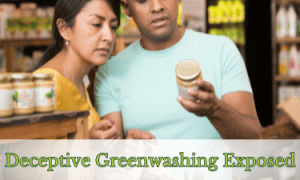
Greenwashing exposed
by Bonnie Pellerin Ι Sept 26, 2023 Ι 3 Min Read
Related Articles:
![]()
Summer Fun Without the Bites:
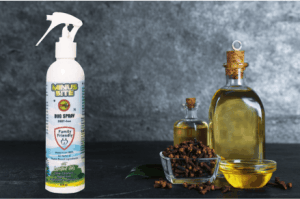
Minus Bite Natural Bug Spray Can Keep Your Family Safe
by Minus Bite Ι May 1, 2023
Get the EarthSential Newsletter
Good deals, great advice & essentially necessary.



